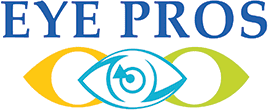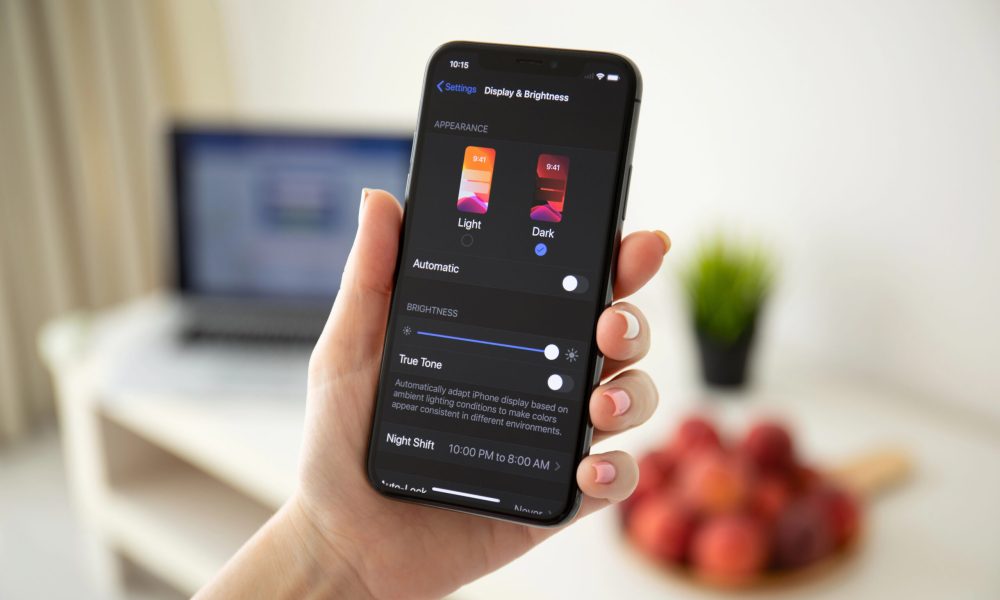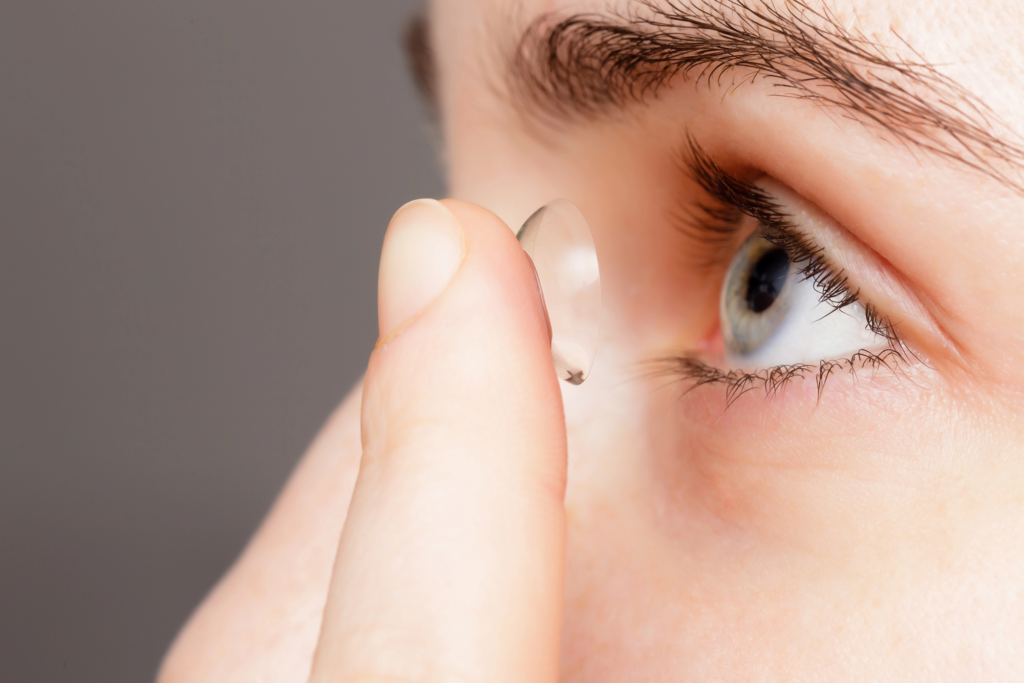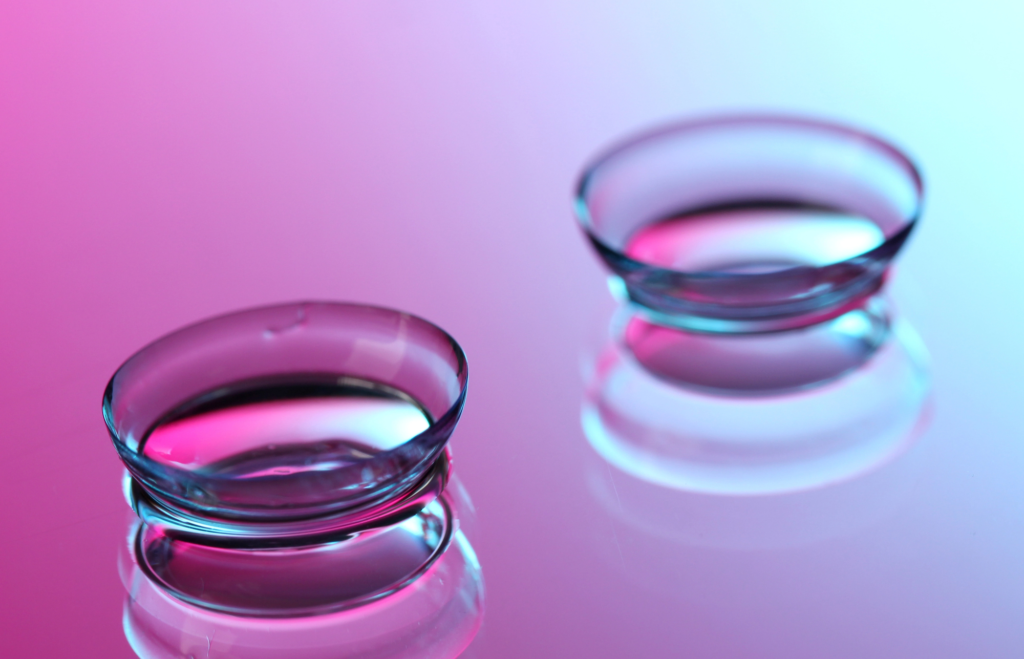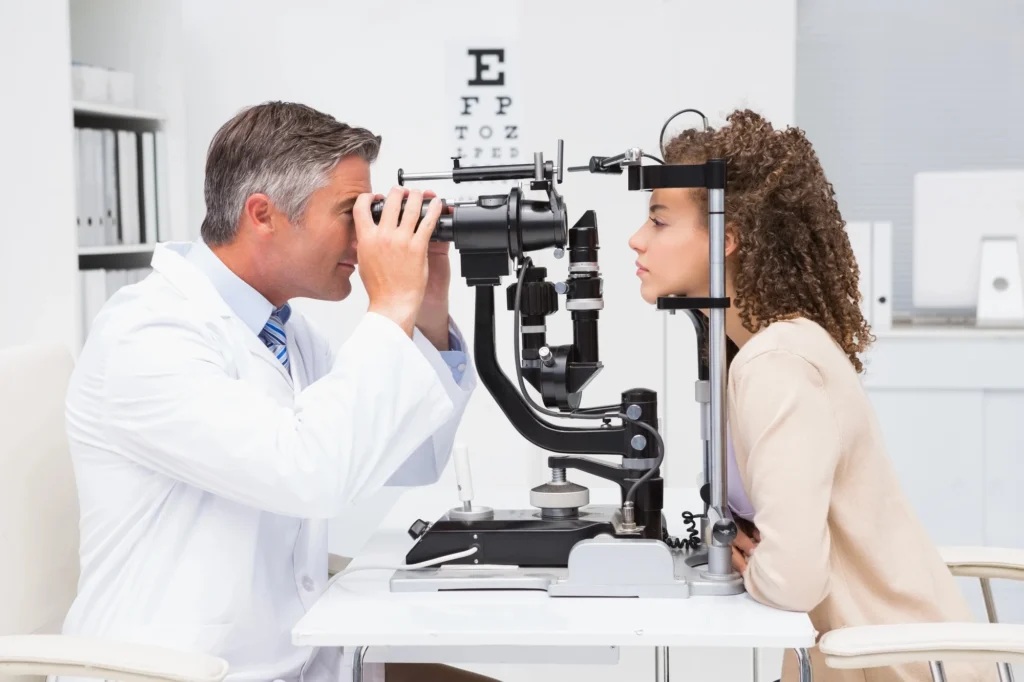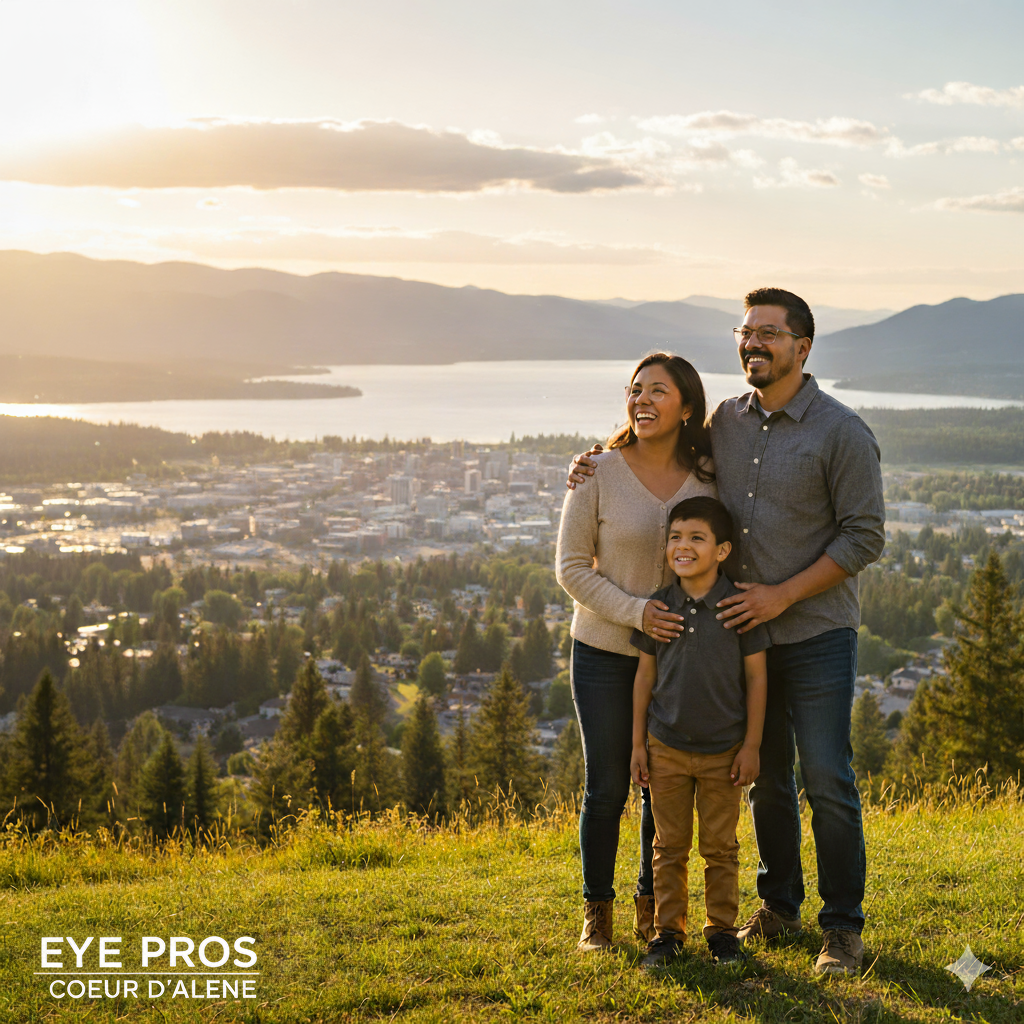With more people using digital devices throughout the day, dark mode has quickly become a popular screen setting. The feature, available on most devices, switches the traditional white background to black, with lighter text, offering a more subdued viewing experience. But the question remains: is dark mode better for your eyes?
Dark mode may indeed benefit eye comfort, especially for those who spend hours working in dim environments. For many, it’s a way to reduce eye strain, limit blue light exposure, and even improve sleep. However, it’s not necessarily the best choice for everyone or for all situations. In this article, we’ll break down the benefits and potential downsides of dark mode, as well as tips for using it effectively to help you make the best choice for your eye health. If you’re unsure, a consultation with an eye doctor from Eye Pros can provide personalized recommendations based on your specific needs.
Benefits of Using Dark Mode for Eye Health
For those who spend hours on screens, dark mode can provide several eye comfort benefits, especially in low-light settings.
Reasons dark mode may be easier on your eyes:
Reduced Eye Strain
The softer, darker background can reduce the glare from screens, making it less taxing on the eyes, especially in dim environments. For people who work at night or in low-light conditions, dark mode can help limit the contrast between screen and surroundings, easing eye strain.
Lower Blue Light Exposure
Blue light from screens can contribute to digital eye strain and interfere with sleep. Dark mode reduces overall screen brightness, lowering the amount of blue light emitted. Although it’s not a complete substitute for blue light filters, dark mode can be an additional tool to minimize blue light exposure in the evening.
Increased Comfort in Dimly Lit Rooms
In dark environments, a bright white screen can feel harsh on the eyes. Dark mode provides a more natural viewing experience for such settings, reducing the need for your eyes to constantly adjust to the contrast between screen and room lighting.
While dark mode can be a helpful feature, it’s not a cure-all for eye strain or discomfort. For more tailored advice on managing screen-related discomfort, our eye doctor can offer personalized solutions, including blue light filters and screen adjustment tips based on your specific needs.
When Dark Mode May Not Be the Best Choice
Although dark mode has its advantages, it’s not ideal for everyone or every situation.
Scenarios where dark mode may not be ideal:
Difficulty in Bright Settings
Dark mode may cause text to appear less clear in brightly lit environments. The reduced contrast can make it harder to read, leading to additional eye strain as your eyes try to adjust. In such settings, light mode is often more comfortable.
Visual Clarity for People with Astigmatism
People with astigmatism may experience more difficulty with dark mode due to reduced contrast, leading to blurred or haloed vision. The lower light levels can also cause the pupils to dilate, increasing the effects of visual distortions, especially in low lighting.
While dark mode offers comfort for certain environments, it’s not always the best choice. Consulting with an eye doctor at Eye Pros can provide you with guidance on screen settings, especially if you have specific vision concerns like astigmatism or experience discomfort during extended screen use.
Practical Tips for Using Dark Mode Effectively
If you’ve decided to try dark mode but want to ensure it’s benefiting your eye health, consider these practical tips.
Practical tips to get the most out of dark mode:
Adjust Based on Time of Day
Dark mode works best in dim or low-light environments, especially at night. During the day, switching back to light mode may reduce eye strain and improve text clarity in bright settings.
Combine with Blue Light Filters
Dark mode reduces overall brightness, but a blue light filter can add extra protection. Many devices have a “night shift” or “blue light filter” mode that can work alongside dark mode to further limit blue light exposure and support eye comfort.
Fine-Tune Brightness
Keep your screen brightness adjusted to match your surroundings. A screen that’s too bright or too dim can still lead to eye strain, so make sure to tweak brightness levels to suit your environment.
Limit Screen Time
While dark mode can help reduce eye strain, limiting screen time is one of the most effective ways to protect your eyes. Taking regular breaks using the 20-20-20 rule (look at something 20 feet away for 20 seconds every 20 minutes) is a simple yet powerful habit.
Using dark mode thoughtfully, especially in combination with these strategies, can help you find a comfortable balance for screen use.
FAQs
Is dark mode healthier for eyes?
Dark mode can be gentler on the eyes in low-light environments by reducing glare and screen brightness. However, its health benefits vary from person to person, and it may not be ideal for everyone. Consulting an eye doctor can provide personalized advice on whether dark mode is suitable for your eyes.
Which is better, dark or light mode?
The choice between dark and light mode depends on your environment and personal comfort. Dark mode works well in dim settings, while light mode is generally more comfortable in bright environments. An eye doctor can help you find the best screen settings based on your vision needs.
Is there a benefit to dark mode?
Yes, dark mode offers several benefits, including reduced glare, decreased blue light exposure, and increased comfort in low-light settings. It may also reduce eye strain for some people, particularly during nighttime use.
Is light or dark mode better for astigmatism?
People with astigmatism may find light mode clearer and easier to read due to the improved contrast, especially in bright environments. Dark mode can sometimes cause blurriness or halos for those with astigmatism, so experimenting with both settings is recommended.
Does dark mode reduce eye strain?
Dark mode can help reduce eye strain in low-light environments by lowering brightness and reducing glare. However, it may not fully prevent eye strain, and regular screen breaks are still important.
Does dark mode help with astigmatism?
For some individuals with astigmatism, dark mode may actually worsen symptoms due to decreased contrast. Light mode often provides a sharper visual experience. If you have astigmatism and experience discomfort with dark mode, speak with an eye doctor for tailored advice.
While dark mode offers benefits like reduced glare and lower blue light exposure, it’s not a one-size-fits-all solution for eye health. The effectiveness of dark mode largely depends on your environment, personal comfort, and specific vision needs. For some, it can reduce eye strain in dim settings, while others may find light mode more comfortable, especially if they have conditions like astigmatism.
If you’re unsure which screen settings are best for your eyes, consulting with an eye doctor can provide clarity. The experts at Eye Pros can help tailor recommendations to your unique vision needs and advise you on practices that keep your eyes healthy in all lighting conditions. Schedule an appointment today to find the best options for clear, comfortable vision with your devices.
